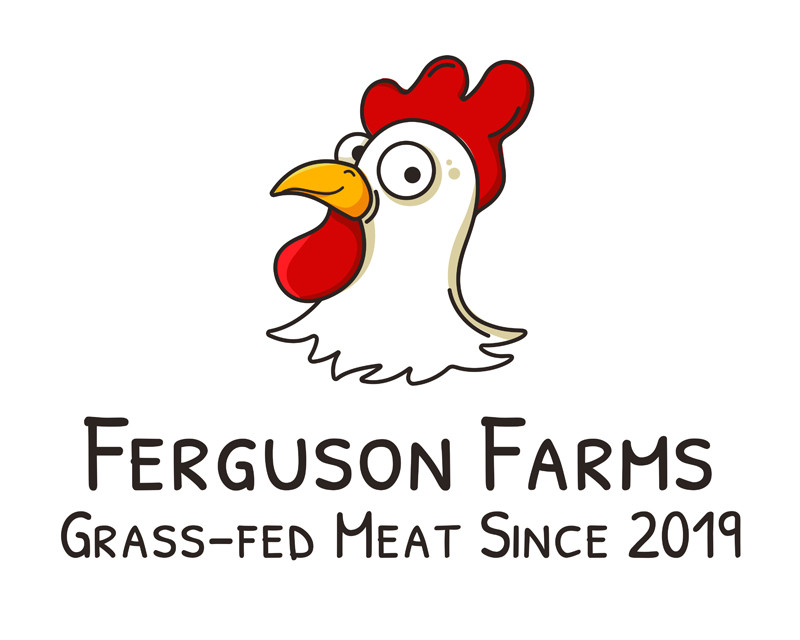The Ultimate Guide to Grass-Fed Beef
posted on
October 1, 2024
The Ultimate Guide to Grass-Fed Beef

As consumers become more health-conscious and environmentally aware, grass-fed beef has emerged as a popular choice. But what exactly is grass-fed beef, and why is it considered superior to other types of beef? At Ferguson Farms, we are proud to offer 100% grass-fed beef, raised sustainably and ethically. In this comprehensive guide, we’ll explain everything you need to know about grass-fed beef—from its nutritional benefits to how it’s produced and why it’s a better option for you, the animals, and the planet.
1. What is Grass-Fed Beef?
Grass-fed beef refers to cattle that are raised primarily on a diet of grass and forage. Unlike grain-fed cattle, which are often confined to feedlots and fed grains like corn and soy to fatten them quickly, grass-fed cattle graze on pasture for most, if not all, of their lives. At Ferguson Farms, we raise our cattle on open pastures, where they have access to a natural diet and the freedom to roam.
Key Features of Grass-Fed Beef:
- Pasture-Based Diet: Cattle are fed grasses and forages instead of grains.
- Healthier Meat: Grass-fed beef is leaner and richer in nutrients, such as omega-3 fatty acids and CLA.
- Ethical Farming Practices: Grass-fed systems promote better animal welfare, as cattle live in natural environments and are not confined to feedlots.
For a deeper understanding of the differences between grass-fed and grain-fed beef, check out our blog on Grass-Fed vs. Corn-Fed Beef.
2. Health Benefits of Grass-Fed Beef
One of the main reasons why people choose grass-fed beef is its impressive nutritional profile. Grass-fed beef is not only leaner, but it’s also packed with essential nutrients that support overall health.
Rich in Omega-3 Fatty Acids
Grass-fed beef contains higher levels of omega-3 fatty acids than grain-fed beef. These healthy fats play a crucial role in heart health, reducing inflammation, and supporting brain function. Omega-3s are primarily found in grass and forages, which is why grass-fed cattle produce meat with higher concentrations of these beneficial fats.
Higher Levels of CLA (Conjugated Linoleic Acid)
CLA is a type of healthy fat that has been linked to reduced body fat, improved immune function, and better heart health. Grass-fed beef has significantly more CLA than grain-fed beef, making it a healthier option.
Rich in Antioxidants and Vitamins
Grass-fed beef is also higher in antioxidants like vitamin E and beta-carotene. These antioxidants help protect cells from oxidative stress and contribute to overall wellness. Additionally, grass-fed beef contains more vitamins, particularly vitamin A and vitamin E, which support skin health and immune function.
To compare how grass-fed beef stands up to other beef options nutritionally, check out our blog on Grass-Fed vs. Grain-Fed Beef.
3. How Grass-Fed Beef is Produced
At Ferguson Farms, we follow sustainable farming practices that not only benefit the animals but also the environment. Grass-fed beef production involves keeping cattle on pasture for most or all of their lives, allowing them to graze naturally on grasses and forages.
Rotational Grazing
One key practice we use is rotational grazing, which involves moving cattle between different sections of pasture to prevent overgrazing. This ensures that the land remains healthy, promotes biodiversity, and improves soil quality. Healthy soil can store more carbon, making grass-fed beef a more sustainable choice that helps combat climate change.
No Antibiotics or Hormones
In our grass-fed system, cattle are never given antibiotics or growth hormones. Instead, we focus on keeping our cattle healthy through proper nutrition and natural living conditions. This means that our beef is free from harmful substances often found in conventionally raised meat.
Ethical Treatment
Cattle in grass-fed systems live more natural, stress-free lives. They can roam freely on pasture, express their natural behaviors, and avoid the confinement and poor living conditions found in CAFOs (Concentrated Animal Feeding Operations).
For more insights into ethical farming practices, visit our blog on Ethically Sourced Meat.
4. Environmental Benefits of Grass-Fed Beef
Grass-fed beef is not only better for your health, but it’s also better for the planet. Raising cattle on pasture supports sustainable farming and helps reduce the environmental impact of meat production.
Improved Soil Health
Rotational grazing practices used in grass-fed systems help improve soil health by promoting plant regrowth and preventing erosion. Healthy soil can retain more water, reduce the need for chemical fertilizers, and support a greater diversity of plant and animal life.
Carbon Sequestration
Grass-fed beef production can actually help combat climate change. Healthy, well-managed pastures can sequester carbon in the soil, removing it from the atmosphere and reducing greenhouse gas emissions. In contrast, grain-fed cattle raised in feedlots contribute to higher emissions due to the use of fossil fuels, synthetic fertilizers, and monoculture grain production.
Biodiversity
Allowing cattle to graze on pasture promotes biodiversity, both in terms of plant life and wildlife. Pastures are home to various species of grasses, plants, insects, and animals, creating a balanced ecosystem that benefits the environment as a whole.
To learn more about the environmental impact of our farming practices, check out our blog on Sustainable Farming Practices.
5. Grass-Fed Beef vs. Grass-Finished Beef
It’s important to note the distinction between grass-fed and grass-finished beef. While all grass-finished beef is grass-fed, not all grass-fed beef is grass-finished. Some cattle are initially raised on grass but are “finished” on grains in feedlots to increase marbling and fat content. At Ferguson Farms, our beef is both grass-fed and grass-finished, meaning our cattle are never fed grains at any point in their lives.
For more details on the difference between grass-fed and grass-finished, visit our blog on Grass-Fed vs. Grass-Finished.
6. How to Cook Grass-Fed Beef

Because grass-fed beef is leaner than grain-fed beef, it requires slightly different cooking methods to maintain its tenderness and flavor. Here are a few tips for cooking grass-fed beef:
- Lower Cooking Temperatures: Since grass-fed beef is leaner, it can cook faster at higher temperatures. Opt for lower heat to avoid overcooking.
- Use Moisture: Slow-cooking or using marinades can help retain moisture in grass-fed cuts, ensuring that the meat stays tender.
- Rest the Meat: After cooking, allow the meat to rest for a few minutes to let the juices redistribute.
For more ideas and inspiration on how to cook grass-fed beef, check out our recipe page.
Conclusion: Why Choose Grass-Fed Beef?
Choosing grass-fed beef is a smart decision for your health, the environment, and animal welfare. With higher levels of omega-3s, CLA, and antioxidants, grass-fed beef offers superior nutrition compared to grain-fed alternatives. Additionally, grass-fed cattle are raised in ethical, sustainable systems that support better animal welfare and help combat climate change.
At Ferguson Farms, we are committed to providing 100% grass-fed and grass-finished beef, raised with the highest standards of care. Make the switch to grass-fed beef today and enjoy the benefits of healthier, more flavorful, and ethically sourced meat.
For more information, explore our blogs on Ethically Sourced Meat and Sustainable Farming Practices.
👉 Shop Grass-fed Beef Here at Ferguson Farms




